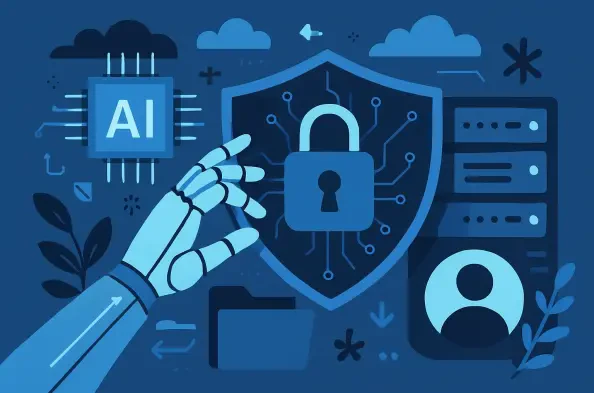Short introductionMeet Vernon Yai, a renowned data protection expert with deep expertise in privacy protection and data governance. With a career dedicated to pioneering risk management strategies and cutting-edge detection and prevention techniques, Vernon has become a trusted voice in safeguarding sensitive information. In this interview, we dive into the evolving landscape of data security, exploring innovative approaches to data loss prevention, the challenges posed by AI-driven technologies, and the shift from reactive to proactive protection. Vernon shares his insights on predicting security needs, managing access control, and addressing the growing risks of data breaches in an increasingly interconnected world.
Can you share what drives your passion for data security and how it has shaped your approach to protecting sensitive information?
My passion for data security stems from seeing firsthand how devastating breaches can be, not just for companies but for individuals whose lives are disrupted. Early in my career, I worked on cases where data leaks led to identity theft and financial ruin for everyday people. That motivated me to focus on prevention over reaction. My approach is all about understanding the value of data as a currency in today’s world and building systems that stay ahead of threats. It’s not just about locking things down—it’s about enabling safe, efficient access while keeping risks at bay.
How do you see the shift from simply monitoring data security to taking actionable steps making a difference for organizations?
Monitoring is like watching a storm brew without preparing for it—you’re just waiting to get hit. Taking action means you’re building shelters before the rain starts. For organizations, this shift is critical because it reduces the window of vulnerability. Instead of just flagging a potential breach after it’s happened, actionable security anticipates risks and adjusts defenses in real time. This proactive stance saves time, money, and reputation by stopping issues before they spiral out of control. It’s a game-changer compared to the old way of sifting through endless alerts after the fact.
What’s behind the growing complexity of data loss prevention in today’s tech landscape, and how can predictive approaches help?
The complexity comes from the sheer volume of data and the speed at which it moves. With AI, cloud systems, and interconnected devices, there’s more data than ever, and attackers are getting smarter with tactics like ransomware and extortion. Predictive approaches help by analyzing patterns—think historical usage or access trends—to forecast where risks might pop up. Instead of drowning in false alarms, these systems focus on real threats and adjust protections before a breach happens. It’s like having a weather forecast for your data security; you can prepare for the storm instead of cleaning up the mess.
With AI tools becoming so widespread, what are the biggest challenges they pose to data governance in enterprises?
AI tools are a double-edged sword. They’re incredibly powerful but often need broad access to data to work, which can expose sensitive information if not controlled. The rapid adoption of these tools means companies are deploying them faster than they can secure them. Add to that the lack of clarity from some AI providers about how data is handled, and you’ve got a recipe for trouble. The biggest challenge is ensuring AI doesn’t become a backdoor to sensitive data—think customer records or trade secrets—while still letting teams use these tools effectively. It’s a balancing act that requires tight governance.
Can you explain how unchecked AI systems might expose sensitive information and what can be done to prevent that?
AI systems, especially those integrated into workflows, often pull in more data than necessary to generate responses or automate tasks. For instance, an AI assistant might access confidential financial reports to answer a vague query, exposing that info to someone who shouldn’t see it. The risk is amplified when these systems store or share data in ways we can’t fully track. Prevention starts with strict access controls—limiting what AI can touch based on user roles—and constant monitoring to catch overreach. Solutions that map data flows and enforce boundaries without hindering productivity are key to keeping things secure.
How do dynamic changes in a workforce, like hiring or promotions, impact data security, and what strategies help manage those shifts?
Workforce changes are a huge headache for data security because access needs shift constantly. A new hire might need certain permissions, while a departing employee’s access should be cut immediately to avoid insider risks. If these changes aren’t managed in real time, you’re left with gaps—either someone can’t do their job, or worse, someone has access they shouldn’t. Strategies like automated access management, tied to HR systems, can adapt permissions instantly based on role changes. Regularly auditing who has access to what also helps catch lingering risks before they turn into breaches.
In terms of data privacy, how can access control systems help organizations meet compliance and security goals?
Access control is the backbone of data privacy. It ensures that only the right people see the right data, which is exactly what compliance frameworks demand. For example, if someone in marketing doesn’t need to see payroll data, an access control system can flag and block that pathway. It’s about enforcing the principle of least privilege—giving people just enough access to do their jobs, no more. This not only reduces the risk of internal leaks but also helps organizations prove to regulators that they’re taking privacy seriously. It’s a win for both security and compliance.
What’s your forecast for the future of data security, especially with the rise of AI and new data loss vectors?
I think data security is heading toward even more automation and prediction. With AI and emerging tech creating new risks—like generative apps leaking data in ways we haven’t fully grasped—traditional defenses won’t cut it. We’ll see platforms that not only predict threats but also self-heal by adjusting protections on the fly. The focus will shift to integrating security into every layer of tech, from development to deployment, so risks are caught early. My forecast is that companies who embrace proactive, AI-driven security will stay ahead, while those stuck in reactive mode will struggle to keep up with evolving threats.






